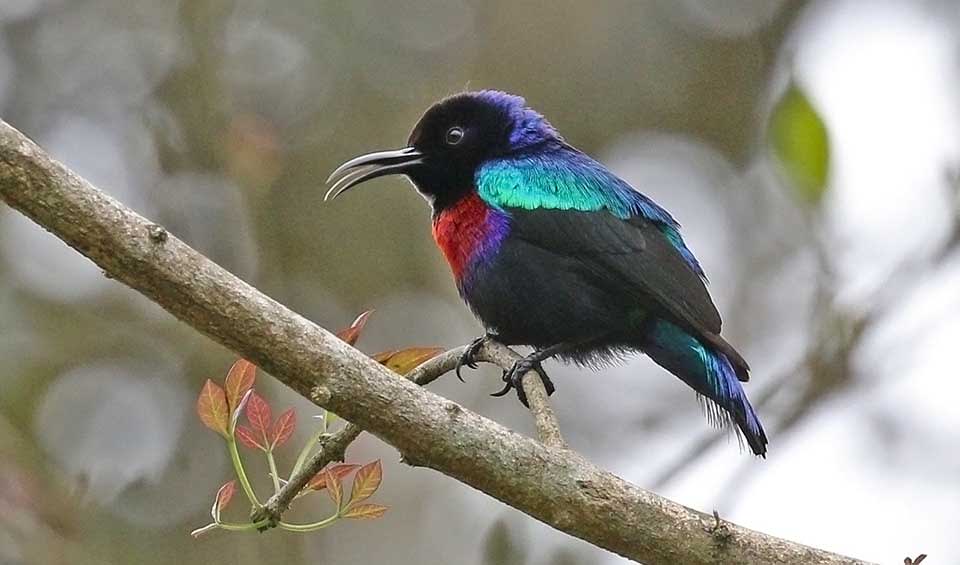A small, shimmering jewel of a bird found in the tropical forests, savannas, gardens, and woodlands of West and Central Africa. True to its name, the male splendid sunbird is a brilliant display of iridescent color and lively energy, flitting from flower to flower like a living gem. These birds belong to the sunbird family, which is often compared to hummingbirds due to their similar feeding habits and dazzling appearance, although sunbirds are unrelated and generally perch while feeding rather than hovering.
Male splendid sunbirds are unmistakable. They have glossy purple heads and backs, a metallic green crown and throat, and a bright crimson chest patch that glows in the sunlight—colors that shift and gleam depending on the angle of the light. The belly is typically black, and the tail is long and slightly curved. In contrast, females are more modest in appearance, with olive-brown upperparts and yellowish underparts, which provide excellent camouflage as they care for the nest and young.
These birds have slender, curved bills perfectly adapted for feeding on nectar, their primary source of energy. They also consume insects and spiders, especially during the breeding season, when extra protein is needed to raise chicks. You’ll often see splendid sunbirds visiting bright, tubular flowers, probing them with their bills and sometimes hanging upside down to reach deep into the bloom. Their role as pollinators makes them vital to the health of local ecosystems.
Splendid sunbirds are active and vocal, frequently seen flitting through gardens, forest edges, or even urban areas with flowering plants. Their calls are usually high-pitched and sharp, often given in bursts as they move quickly through their territory. Males are known to be territorial, especially during the breeding season, and will chase off intruders with fluttering flights and bursts of song.
Distribution
 Benin
Benin Burkina Faso
Burkina Faso Cameroon
Cameroon Central Af. Rep.
Central Af. Rep. Côte D’ivoire
Côte D’ivoire DR Congo (Kinshasa)
DR Congo (Kinshasa) Gabon
Gabon Gambia
Gambia Ghana
Ghana Guinea-Bissau
Guinea-Bissau Guinea
Guinea Liberia
Liberia Mali
Mali Nigeria
Nigeria Senegal
Senegal Sierra Leone
Sierra Leone South Sudan
South Sudan Sudan
Sudan Togo
Togo Uganda
UgandaAnything we've missed?
Help us improve this page by suggesting edits. Glory never dies!
Suggest an editGet to know me
Terrestrial / Aquatic
Altricial / Precocial
Polygamous / Monogamous
Dimorphic (size) / Monomorphic
Active: Diurnal / Nocturnal
Social behavior: Solitary / Pack / Herd
Diet: Carnivore / Herbivore / Omnivore / Piscivorous / Insectivore
Migratory: Yes / No
Domesticated: Yes / No
Dangerous: Yes / No




